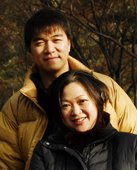By Brenda Koller
Special to The Korea Times
With countless coffee houses springing up everywhere in Seoul, you may be surprised to know that, second to water, tea is the most preferred beverage for the majority of people around the world.
But how often do you think about what type of tea you are drinking, where it was grown, how it was processed and what is the best way to drink it? I pondered those questions and more during a delightful afternoon at the ``World Tea Festival 2007'' held at COEX from June 27 to July 1.
About 200 booths from eight countries including world renowned tea companies exhibited everything you might want to know about tea culture from tea products such as pots and cups, tables, utensils, books, and most importantly, hundreds of different varieties and styles of tea.
Although tea has been popular for over 5,000 years, the market for tea is increasing. According to organizers of the event, sales of tea beverages in Korea have increased by 40 percent over last year with the Korean market valued at 40 billion won.
Studies have shown that drinking tea has many health benefits such as reducing the risk of cancer and coronary heart disease, to name just two. And with more and more people following the well-being trend, it's no wonder that tea's popularity is on the rise.
All tea originates from the plant Camellia sinensis and there are four basic types _ black, green, oolong or white. The exception to this is puer tea (also spelled puerh, pu-erh, pu erh).
Tea was first discovered in China and the history of puer tea dates back centuries to ancient tea plants that still grow today in Yunnan.
I had the pleasure of discovering puer tea at the World Tea Festival when I sat down at the Jiyumyungcha puer tea store's booth. After the first sip I was enthralled; after the second sip I was hooked. Puer tea looks and tastes similar to black tea, but has a bold aroma and taste of its own, a taste that kept me lingering at the company's booth.
It certainly helped that one of the company's servers, Jacqueline Park, spoke English and was more than willing to explain the many intricacies of puer tea to a novice drinker.
Park explained that there are two basic kinds of puer, one of China's most popular teas: Sheng Cha, which is raw, naturally fermented puer, and Shu Cha, which is cooked and undergoes an accelerated fermentation process.
My taste tests revealed a preference for Sheng Cha, which is less woody or earthy tasting than Shu Cha. Puer is also categorized by shape and is available in a variety of shapes such as tea bags, loose-leaf, disc and bowl-shaped, which resembles little acorn-sized bowls.
In many ways, Puer tea can be compared to fine wine as it evolves as it ages and the value often increases with age. Park said that she has tasted puer tea that is much older than herself.
Puer tea purportedly helps with digestion and intestinal activities, not to mention the calming effect it imparts while savoring its unique flavor.
My interest piqued, the quest for additional knowledge of puer tea led me to David Kilburn, chairman of the Tea Museum, who suggested I visit his shop at Lotte Department Store in Myeong-dong. There, manager Choi Eun-sil (who is also fluent in English) introduced me to the company's eight styles of puer tea. Kilburn had suggested sampling two in particular.
Jinhong puer is a blend of puer from Yunnan and cinnamon from Sri Lanka, which is based on a traditional method used by the Jinuo tribes people in China. The blend imparts a delicate cinnamon taste that pleasantly enhances the flavor of the tea.
Of particular interest at the Tea Musuem was the orange puer, which not only tastes delectable but also looks lovely. It is made by removing all the fruit from the inside of a small, bitter orange native to China.
The tea is then pressed inside the shell and allowed to dry and mature. Choi crumbled part of the orange in with the tea before allowing it to steep. The tea was most pleasant, imparting a refreshing touch of citrus.
I'll admit, I would be hard-pressed to give up my afternoon shot of espresso, but I simply cannot imagine a day without tea. And now my tea drinking has been greatly enhanced with delicious and mysterious puer tea.




No comments:
Post a Comment